Request for Restoration of Damaged Hanging Scrolls from the UK

Request for Restoration of Damaged Hanging Scrolls from the UK
Contents
Request for Restoration of Damaged Hanging Scrolls from the UK
I would like to talk about the restoration process of the two hanging scrolls here.
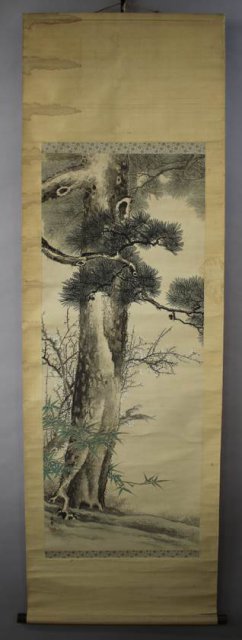
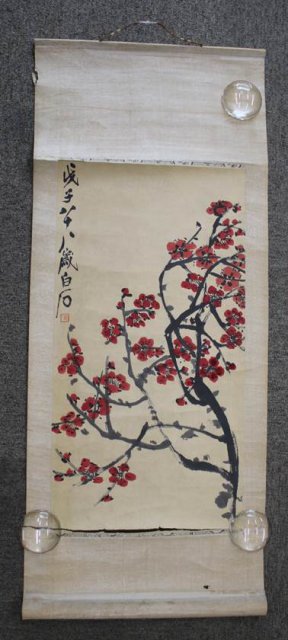
Our client lives in the UK. The United Kingdom certainly reminds us of the birthplace of rock ‘n’ roll and, of course, the Beatles, doesn’t it? That’s where our story begins.
The hanging scrolls that require restoration were purchased by our client’s parents, with which she grew up and to which she feels a personal attachment.
Here, the first hanging scroll, depicting auspicious symbols of pine, bamboo and plum, is displayed for celebrations.
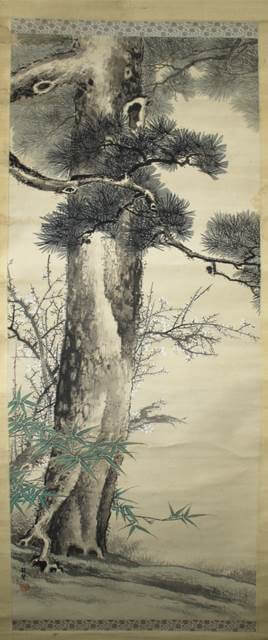
The second hanging scroll illustrates red plums, which would suit being hung in early spring, perhaps March, in Japan.

However, the second scroll has been severely damaged. The bottom of the painting has been torn off from the mounting.
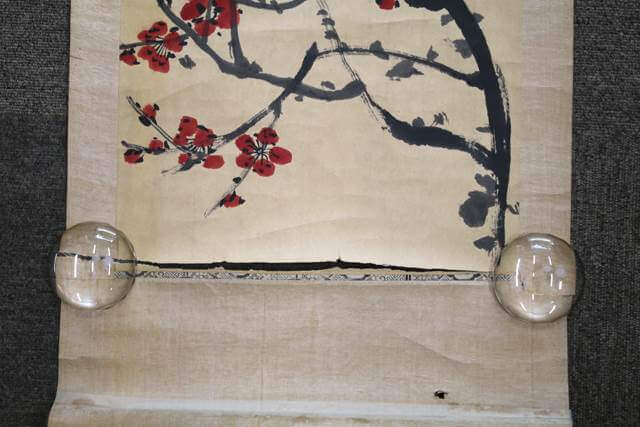
Fortunately, the painting itself did not have major damage though some minor tears could be noticed, which require extra care when remounting the scroll.
Next, I would like to present the restoration process step by step.
Restoration Process
Removal of Old Backing Paper
First of all, water is sprayed on to the back of the painting to moisten it, softening the paste used to attach the backing paper to the back of the painting.
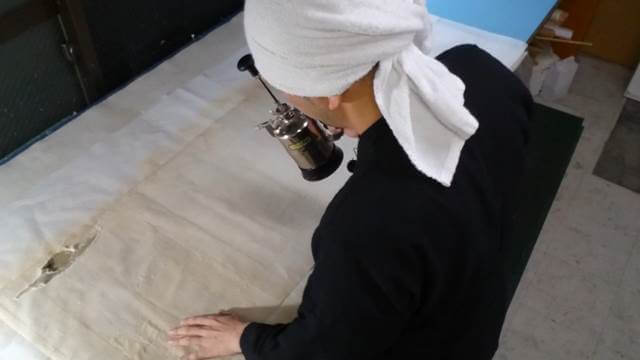
In general, there are three layers of backing paper applied to the back of the painting. All of them must be removed. (The ordering is sō-urauchi (the third layer), then naka-urauchi, (the second layer) and finally hada-urauchi (the first layer).)
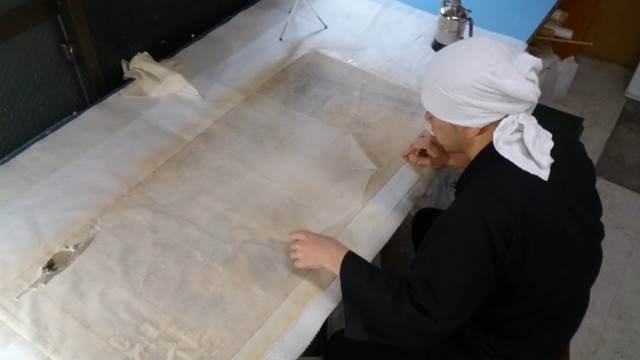
Here is a photo taken after the removal of the second layer, naka-urauchi.
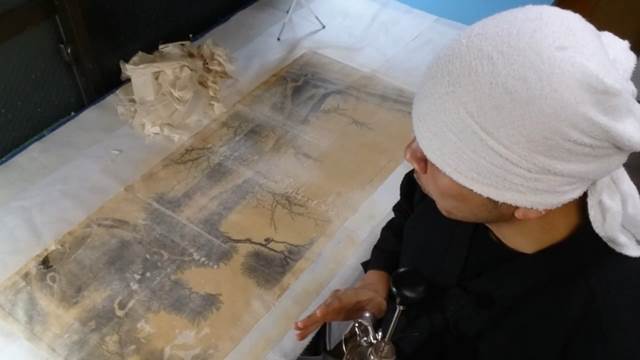
Problems can occur during the removal of the last layer, hada-urauchi, even if it has been a relatively easy task until then. Removing the last layer is the most challenging task that demands skilful execution. In other words, if the first two layers were difficult to remove, then it would usually take much longer time to remove the last layer, hada-urauchi. I must prepare myself well.
It looks good. The paste seems reasonably loose, which will help me to remove the last layer relatively easily.
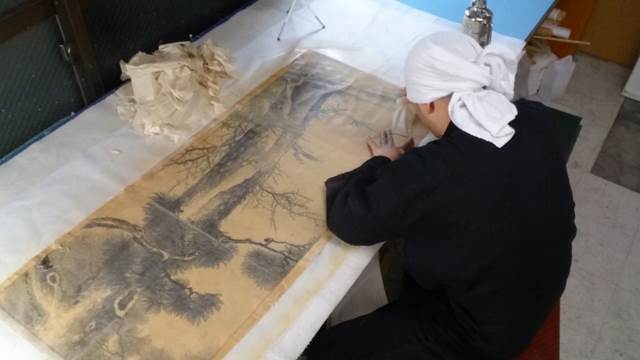
Yet, delicate and careful handling is always needed, otherwise the material on which the picture is painted will easily come off with the backing paper.
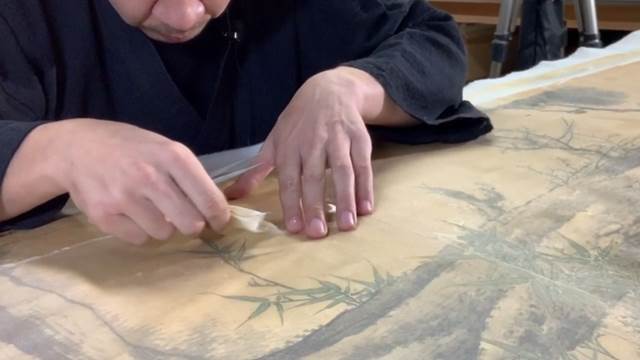
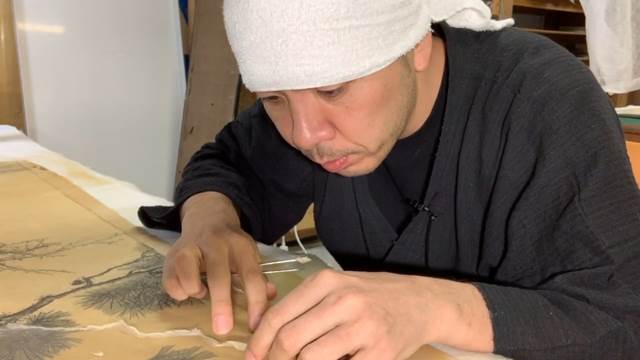
All of the old backing paper is now completely removed. The condition of the painting itself helped me peel the layers off without any specific difficulties.
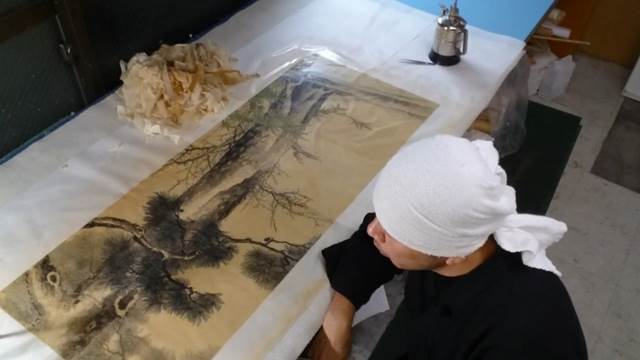
The pile over there is the whole of the old backing paper. It is quite a lot. If everything is okay after the painting is dried, new layers of backing paper will be applied to it.
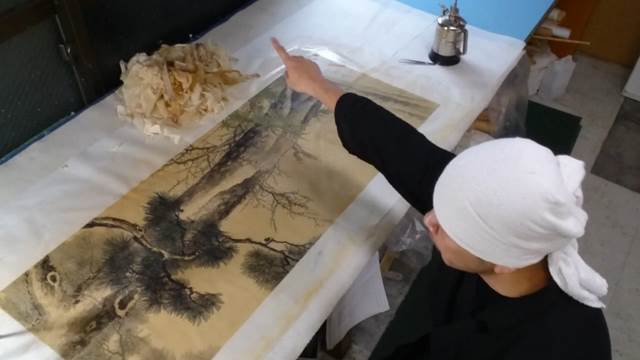
Next, the plum scroll will be dealt with. At first sight, I realised that it would take much more time to remove the old backing paper than the previous scroll.
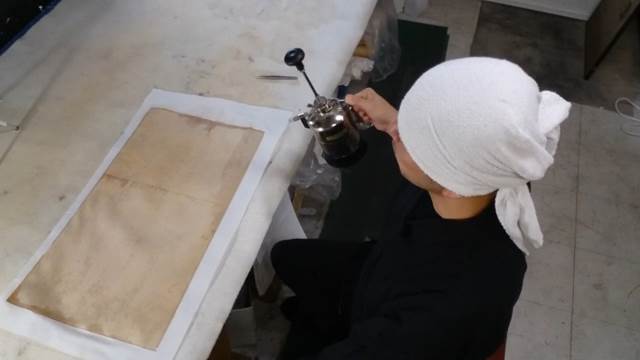
As expected, its process is already in trouble. It is going to be very time-consuming.
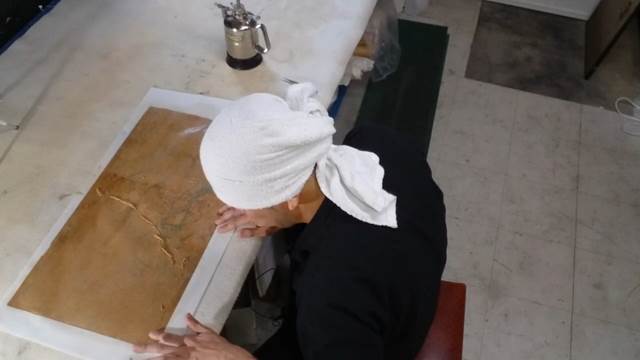
Spending an hour of work only succeeded in removing the upper part of the last layer. The layers have completely stuck to each other, and it is a totally different experience that I am going through from the previous scroll.
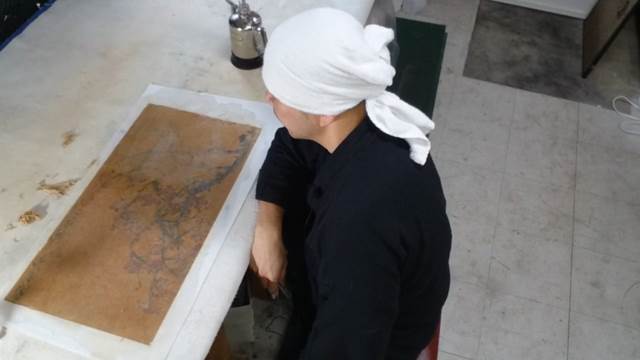
This little heap I am pointing at is the amount of the old backing paper that I have managed to peel off so far, which shows a good contrast with the other. When persistent, backing paper will come off as small pieces like this. If this is the case, the technique has to change, which is to rub the backing paper with your fingers rather than to peel it.
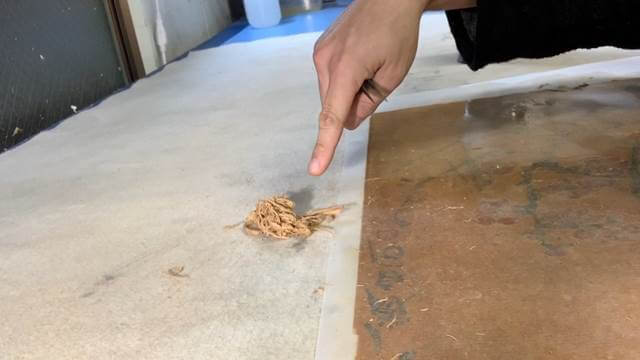
If you try to peel it forcefully, then it is more likely that you will damage the painting itself. Therefore, it has to be done little by little very cautiously.
At first glance, it appears that the last backing paper (hada-urauchi) had not been applied. Yet, the paper is coming off when rubbing the back of the painting with my fingers. It means that the backing paper was certainly applied so it must be peeled off. If the last backing paper is not removed and new backing paper is applied to the painting, the finished work would be inflexible and unable to be rolled up, and if done forcefully, it would likely cause some major issues; the scroll to be split in the process and air-pockets created between the back of the painting and the backing paper while the unremoved old backing paper would be partially detached from the painting material. If this happened, the whole process would have to be redone. In order to avoid having such results, the removal of the backing paper is a vital key in the remounting process.
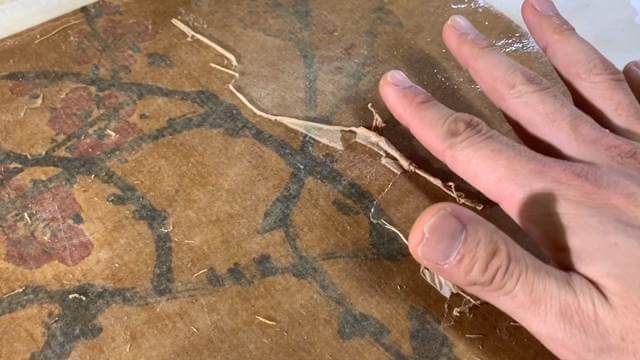
It took me two hours to finally finish removing all of the backing paper from the artwork. It was really tough. It was really tough.
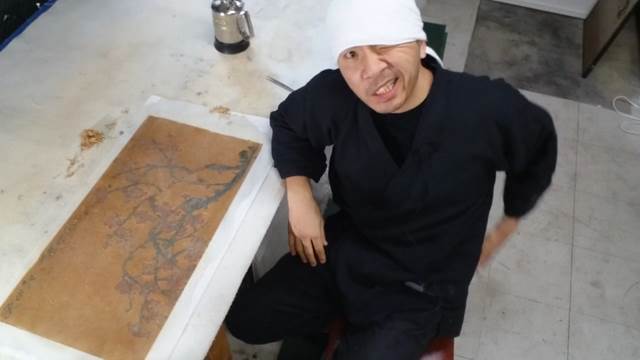
Here is shown the remains of the removed backing paper. It is a very rare case where all removed backing paper is in such condition.
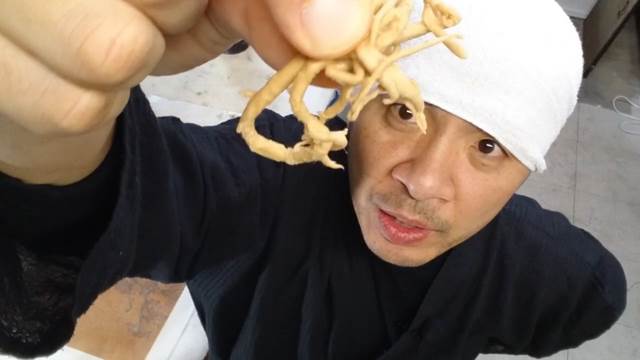
Next, the scroll will be let to dry for a little, allowing remnants of the old backing paper that might be still attached to the back of the painting to be loosened and removed before new backing paper is applied.
Well, I am happy to say that I was able to turn over both of the artworks without causing any damage.
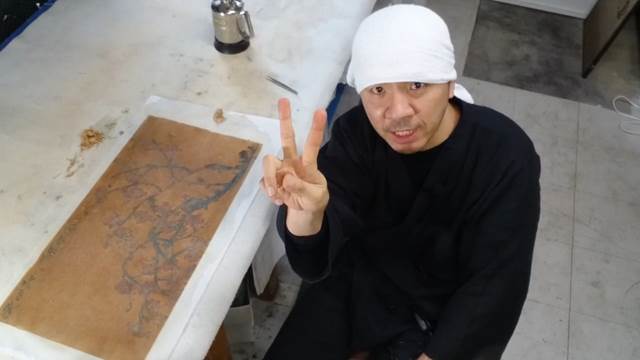
Application of New Backing Paper
New backing paper will now be applied. Paste is spread to a new washi paper (new backing paper). Then, the paper is adhered as neatly as possible to the back of the artwork with a brush.
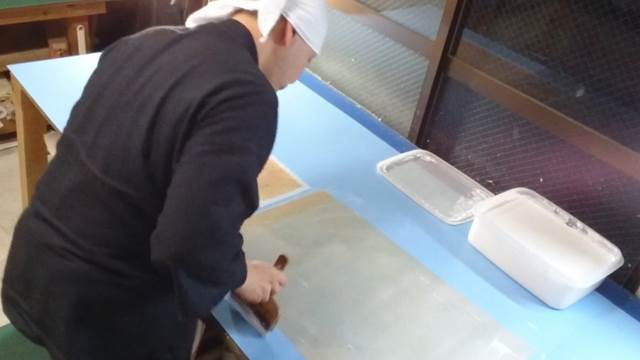
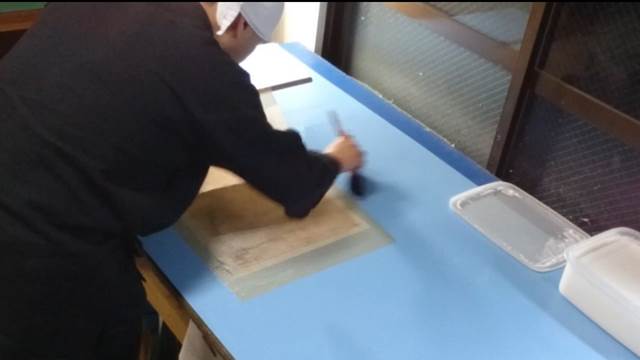
When it is done, a brush is used to tap the back of the backing paper and the painting. By doing so, the fibres of the backing paper and the material on which the artwork is painted will be well intertwined, which will also result in better adhesion.
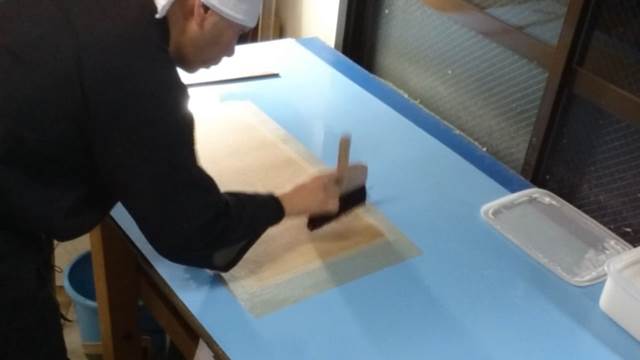
When the whole process is finished, the scroll is temporarily fastened to the board and allowed to dry. This process is called ‘kari-bari’.

Trimming of Excess Backing Paper and Measurement of Fabric for Mounting
When the work is dried, the excess backing paper is trimmed first, then the four corners are created at right angles.
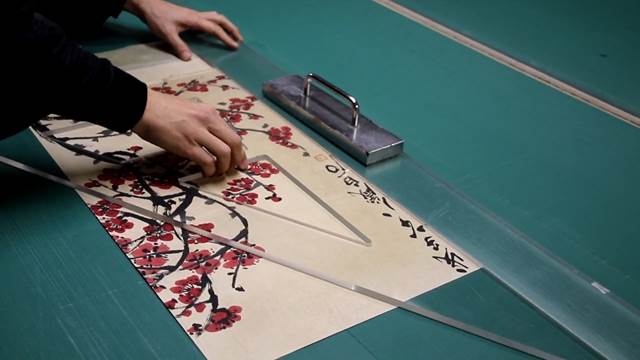
The mounting fabric is cut to size according to the dimensions of the painting.
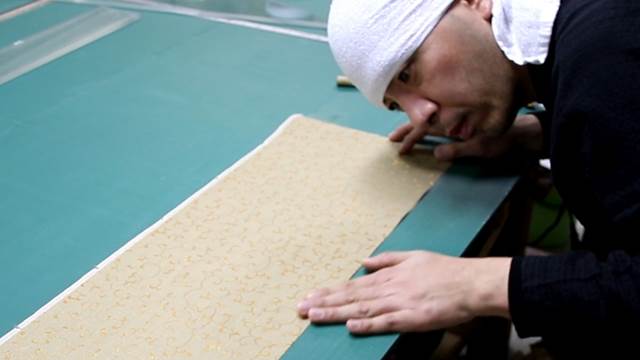
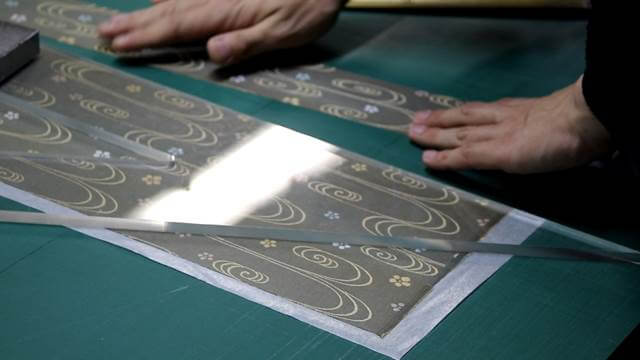
Attachment of Fabric to Scroll
The pieces of mounting fabric are to be attached to the painting in a certain order. This process is called ‘tsuke-mawashi’.
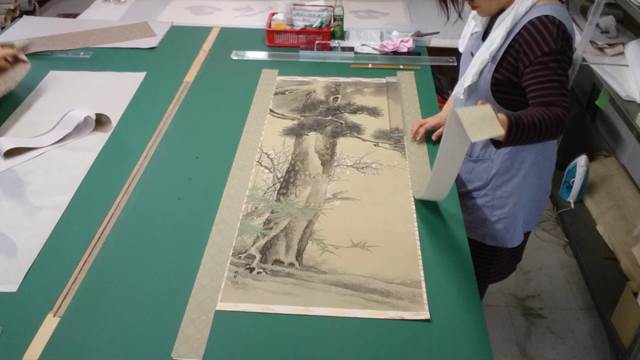

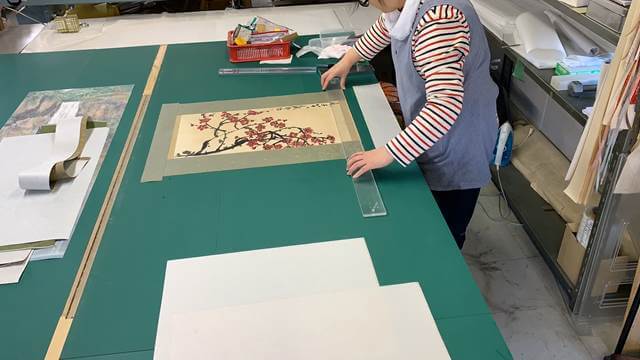
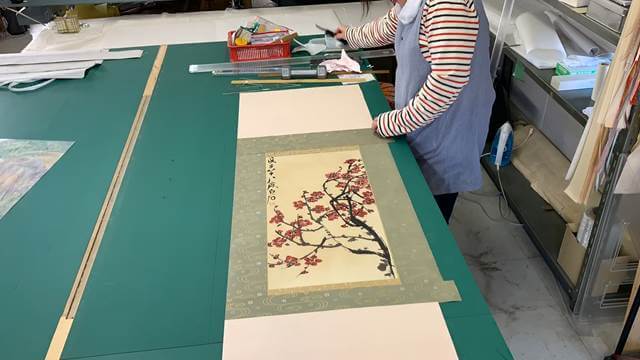
Creation of Hem
After the fabric is attached to the artwork, both sides of the hanging scroll are folded inward about 3mm towards the back side of the scroll and then glued. This prevents the surface of the artwork from directly touching the back side of the hanging scroll when it is rolled up, thus averting damage to the artwork itself or adhesion of the paint to the back side of the scroll. This process is called ‘mimi-ori’.
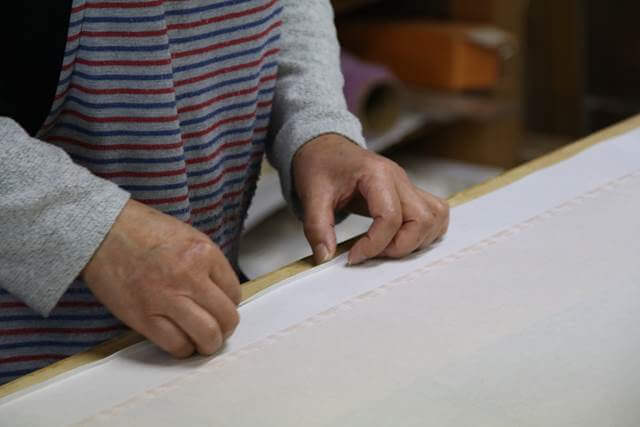

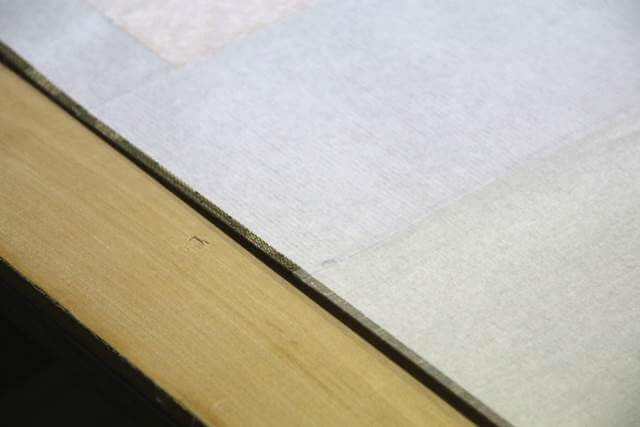
Finishing
Finally, the restoration process is now completed by finishing off the top and bottom ends of the hanging scrolls.

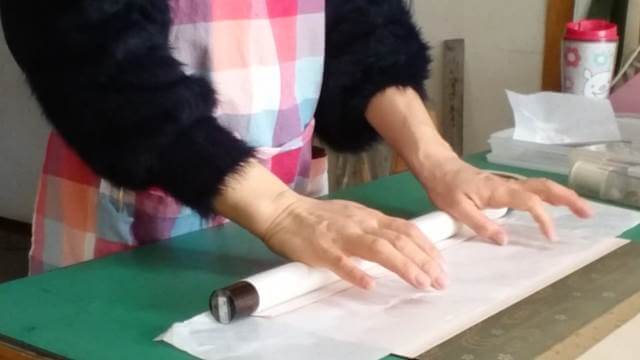
Restoration Completed
These two hanging scrolls have been repaired. Overall, they turned out well.
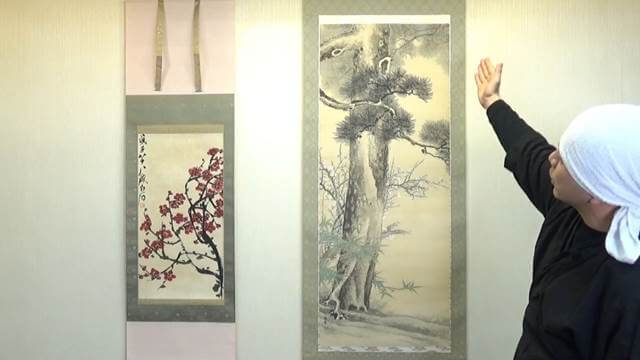
I am pleased with the results, especially having had a hard time removing the old backing paper of the plum scroll.
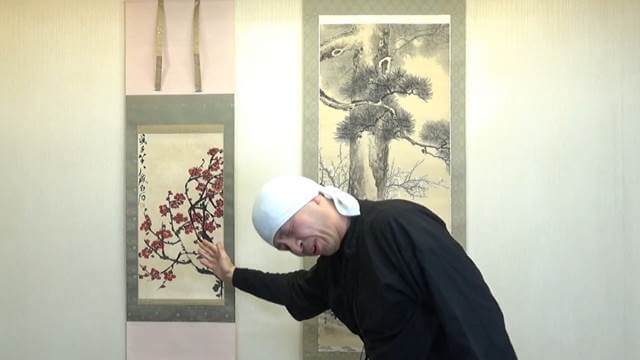
Before the restoration, the scroll of pine, bamboo and plum had large stains on the mount. The new mounting now gives the painting a fresh look.
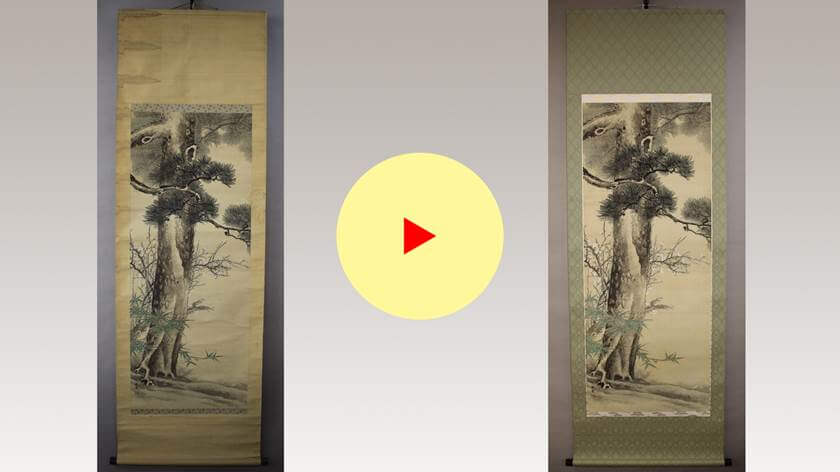
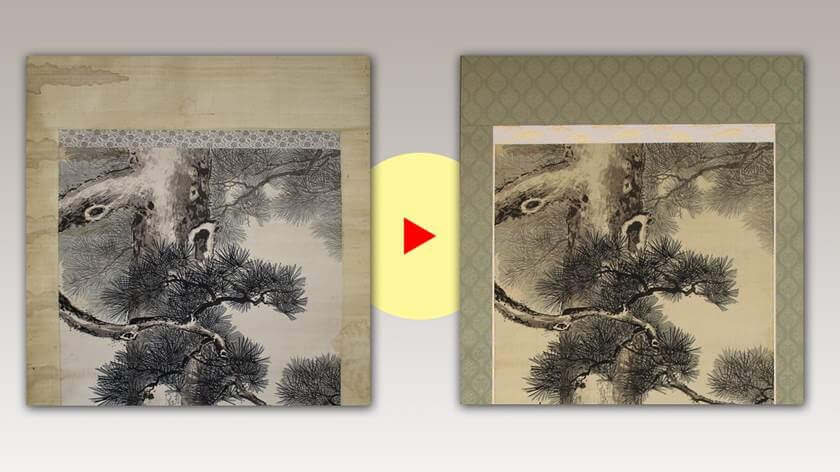
The plum scroll retained its beauty though it had already been torn at the bottom.
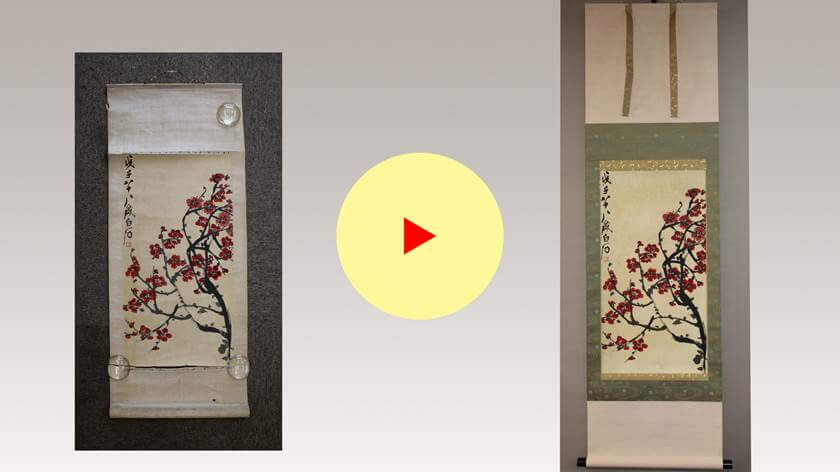
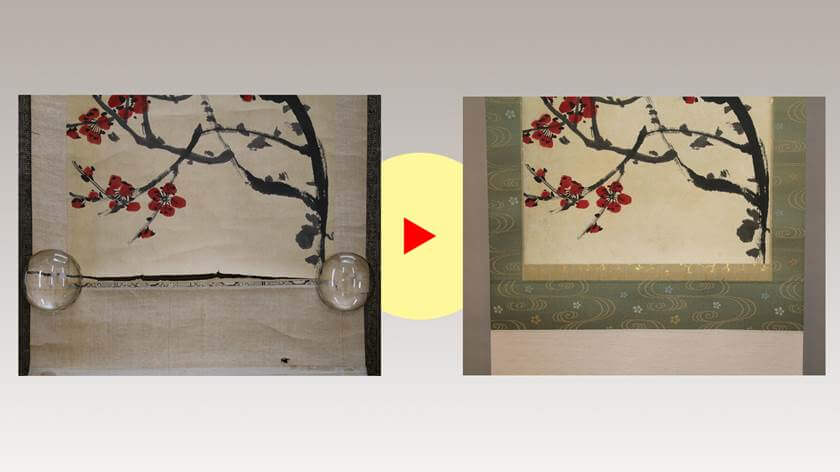
These two hanging scrolls are irreplaceable for the client who has had them since she was a child. Moreover, we knew that they were her mother’s treasured possessions, and such stories always motivate us as hyōgushi (scroll mounters) to work hard. This case is no exception. Our desire to respond to her wishes became the driving force that allowed us to overcome these difficult tasks. We will be delighted if our client is happy with the results.
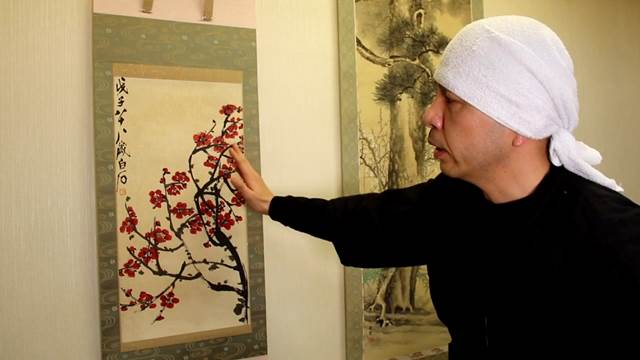
We always do our best to meet clients’ wishes when repairing and restoring damaged hanging scrolls that you treasure. Please feel free to contact us if you wish to refresh any of your hanging scrolls.

